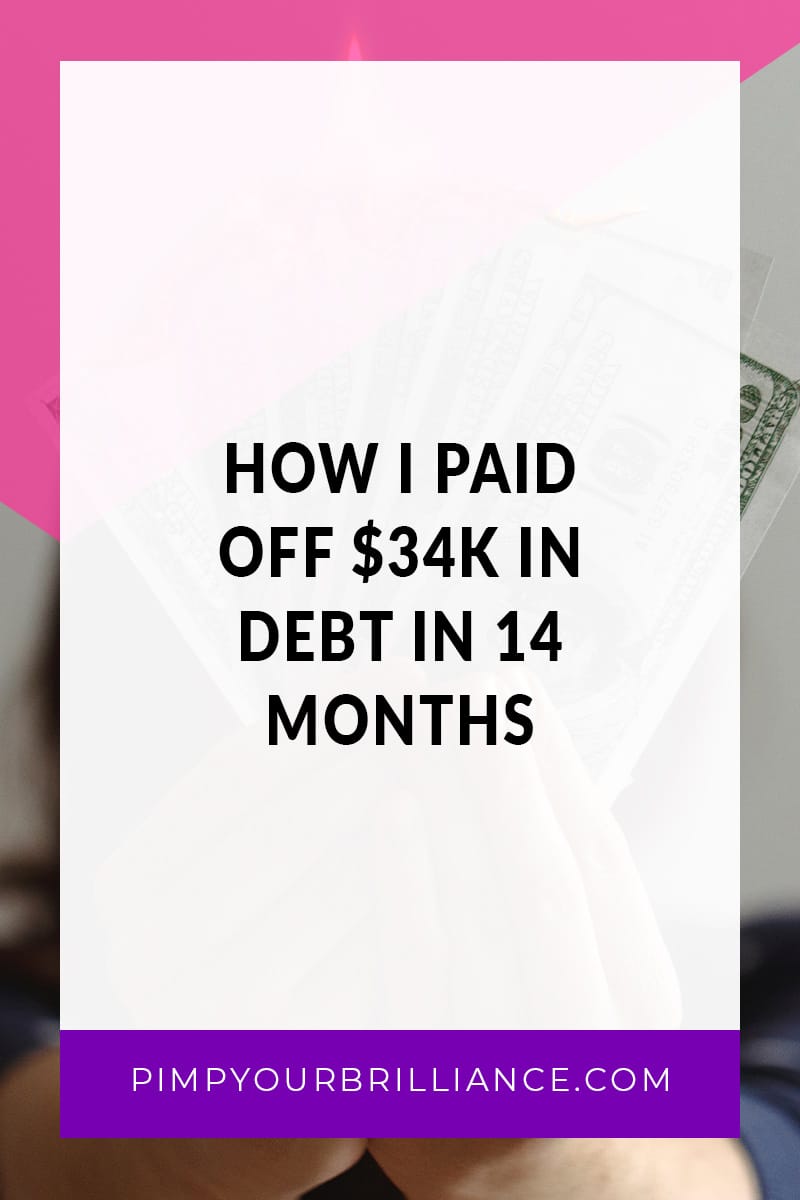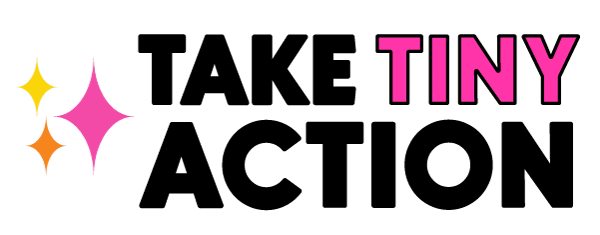
I started my debt payoff journey like most people, being sick and tired of feeling sick and tired. The debt was heavy leaving me feeling burdened and weighed down.
We were paying way too much in minimum payments and the interest was killing us. Around December 2018, I decided that I had enough. My family would never get to a place of financial freedom and flexibility if we didn’t start wiping out our debt.
So over the course of the last 14 months (January 2019 to February 2020), I’ve managed to pay off all of our credit card debt.
Here’s how I paid off $34k in 14 months:
Step 1. I got real about my debt
Before I started on this journey, I had a vague sense of how much credit card debt I actually had. I paid the minimums every month but tried now to get too hung up on the balances.
This was a huge mistake. It actually shocked me to learn that my credit card debt exceeded my student loans.
So I decided to get a clear picture of how much I owed, the interest rate and how much I was paying a month in minimum payments. This is the first step you must take to get out of debt.
This is the debt reduction spreadsheet that I used. I swear by it and it’s free if you have less than 10 creditors to input.
I challenge you to:
- Download the spreadsheet
- Fill it in with your debts, interest rates, and minimum payment details
- Get a bird’s eye view of your total debt so that you can make a plan.
Step 2. I set rules that worked for my lifestyle
I’m a firm believer that you have to make habits easy to follow in order to make them stick, especially money habits. I’ve read Dave Ramsey’s Total Money Makeover so I’m familiar with his seven steps but they didn’t work for me.
I understand that paying off debt should take priority to funding my emergency fund but due to past experiences, I didn’t feel comfortable. So I created rules that worked for me.
Here they are:
- Pay 20% of cash influxes (tax returns, bonuses, income spikes from my business) into my emergency fund
- Make sure all upcoming expenses are covered
- Throw the rest of the money at the smallest debt aka the debt snowball method
Doing this lessened the sting of paying back thousands of dollars. I didn’t feel like ALL of my money was going to the debt since some of it was in savings.
Step 3. I snowballed my smallest debt
This is a strategy that I learned from Dave Ramsey. With the snowball method, you line your debts up from smallest to largest. Then, you pay as much as you can to your smallest balance while paying the minimum amount on every other debt.
I love the snowball method because you start to see progress right away. I was able to pay off two smaller cards early on. That bit of momentum helped me stay motivated to keep attacking the larger balances.
**Pro Tip** Make sure you track your debt payments in a notebook or something outside of the actual accounts because it takes longer to see progress on the larger balances. I was 9 or 10 months into the process before I felt like I was doing real damage because I was chopping down a large balance. When in reality I was doing a really good job.
Step 4. I took advantage of a 0% interest balance transfer offer
Around October, I received a zero-interest balance transfer special offer on my Chase Sapphire card. At the time I had about $6,000 left to pay on it but I really needed to take advantage of this offer.
My Wells Fargo credit card balance was crazy high and the interest made me want to cry. I had until the end of November to complete the transfer before the offer expired.
I stretched myself using funds from my business and half of my emergency fund to pay the Chase card balance down to $0. I submitted the transfer which made my final and most expensive $15k of my credit card debt payable with 0 interest.
This was the first time in over 3 years that I felt calm when thinking about my finances instead of quietly panicking.
**Pro Tip** Read all the details before using a balance transfer. They aren’t free (fees are usually a percentage of the transferred amount) and the offers have an expiration date. I only recommend you do this if you have a solid plan for paying it off before the special offer runs out.
Step 5. I stayed consistent and followed the rules
Even though paying off debt isn’t easy, the key to my consistency was following my rules. I really needed things to be simple with minimal friction.
Defaulting to my rules whenever influxes of cash came in helped. There was no questioning what to do or should I pay. I just paid according to the rules and moved on.
A year into the debt repayment process and I realized that I’ve made a major mindset shift. I used to think about what I could spend the money on instead of sending a payment. Now I can’t wait to make my payments because each time that I do I feel lighter and freer.
I’m not completely debt-free yet. My next focus is to pay off my husband’s car and then we will start climbing the student loan mountain. This process is slow but the outcome will be worth it.
My best advice is to get clear on your debt, make a plan and keep attacking it. The journey will be challenging but coming out on the other side with no debt is the ultimate prize.
Do you have debt? How are you approaching it?
